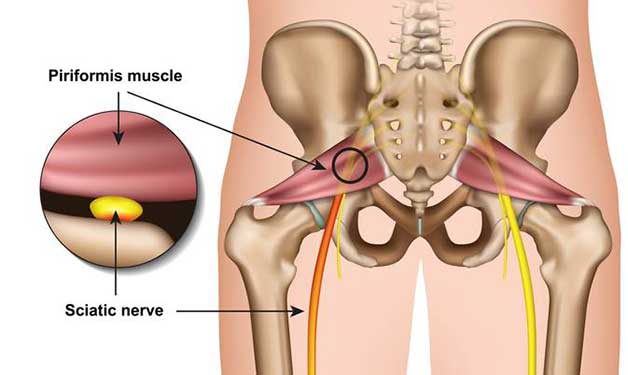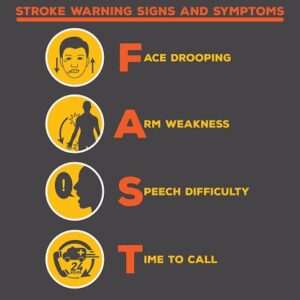Say Goodbye to Sciatic Nerve Pain in Just 10 Minutes with This Natural Method
Sciatic nerve pain, or sciatica, is a condition that affects millions of people worldwide. It is caused by the compression or irritation of the sciatic nerve, which runs from the lower back to the back of the legs. Sciatica can cause symptoms such as pain, numbness, tingling, or weakness in the lower back, buttocks, hips, or legs. The pain can range from mild to severe and can interfere with your daily activities and quality of life.
read also: Tips to Protect Your Lower Back & End Back Pain
While there are many conventional treatments for sciatica, such as medications, physical therapy, or surgery, some people may prefer to try natural methods to relieve their pain and avoid potential side effects. One of these natural methods is a simple exercise that can be done at home in just 10 minutes. This exercise can help stretch and relax the muscles that surround the sciatic nerve and reduce the pressure on it. Here is how to do it:
- Lie down on your back on a flat surface, such as a bed or a mat. Bend your knees and place your feet flat on the floor. Make sure your spine is aligned and your head is supported by a pillow.
- Slowly bring your right knee to your chest and hold it with both hands. Keep your left leg relaxed on the floor.
- Gently pull your right knee toward your left shoulder until you feel a mild stretch in your right buttock and lower back. Do not twist your spine or move your left leg. Hold this position for 30 seconds and breathe deeply.
- Slowly release your right knee and return to the starting position. Repeat the same steps with your left knee.
- Do this exercise three times on each side, alternating between your right and left legs.
- You can do this exercise once or twice a day, depending on your pain level and tolerance.
This exercise can help ease your sciatica pain by increasing the blood flow and oxygen to the affected area, reducing inflammation and spasms in the muscles, and improving your flexibility and range of motion. However, you should be careful not to overdo it or force yourself beyond your comfort level. If you feel any sharp or severe pain during or after the exercise, stop immediately and consult your doctor.

Sciatic Nerve Pain: Causes, Symptoms and Treatment
Sciatic nerve pain, also known as sciatica, is a common condition that affects millions of people worldwide. It is characterized by pain that travels along the path of the sciatic nerve, which runs from the lower back through the hips and buttocks and down each leg. Sciatica can cause various symptoms, such as pain, numbness, tingling, or weakness in the lower back, buttocks, hips, or legs. The pain can range from mild to severe and can interfere with daily activities and quality of life.
Causes of Sciatic Nerve Pain
Sciatica occurs when the sciatic nerve becomes pinched or irritated by something that puts pressure on it. The most common cause of sciatica is a herniated disc in the spine. A herniated disc is a condition where a disc, which is a cushion between the vertebrae (bones) of the spine, bulges or ruptures and presses on a nerve root. This can cause inflammation and pain in the nerve.
Other causes of sciatica include:
- Spinal stenosis: This is a narrowing of the spinal canal, which is the space where the spinal cord and nerves pass through. This can compress the nerves and cause pain.
- Spondylolisthesis: This is a condition where one vertebra slips forward over another one. This can create a gap where a nerve can get trapped and cause pain.
- Piriformis syndrome: This is a condition where the piriformis muscle, which is located in the buttock, spasms or tightens and irritates the sciatic nerve.
- Pregnancy: This can cause sciatica due to hormonal changes, weight gain, or pressure from the growing uterus on the sciatic nerve.
- Other conditions: Some other conditions that can cause sciatica include diabetes, tumors, infections, or injuries.
Symptoms of Sciatic Nerve Pain
Sciatica symptoms can vary depending on the location and severity of the nerve compression or irritation. The symptoms can affect one or both sides of the body. Some of the common symptoms include:
- Pain: Sciatica pain can be sharp, burning, shooting, or throbbing. It can be worse when coughing, sneezing, sitting, or standing for a long time. It can also radiate from the lower back to the buttock and down the leg.
- Numbness: Sciatica can cause numbness or loss of sensation in the affected area. This can make it difficult to move or feel the leg or foot.
- Tingling: Sciatica can cause tingling or pins-and-needles sensation in the affected area. This can feel like an electric shock or a prickling feeling.
- Weakness: Sciatica can cause weakness or difficulty in moving the leg or foot. This can affect walking, running, or climbing stairs.
- Other symptoms: Sciatica can also cause other symptoms such as muscle spasms, cramps, reflex changes, or bladder or bowel problems.
Treatment of Sciatic Nerve Pain
The treatment of sciatica depends on the cause and severity of the condition. Most cases of sciatica resolve on their own with time and self-care measures. However, some cases may require medical intervention. Some of the common treatment options include:
- Medications: These can help reduce pain and inflammation in the affected area. Some of the common medications for sciatica include over-the-counter painkillers (such as ibuprofen or acetaminophen), anti-inflammatory drugs (such as naproxen or aspirin), muscle relaxants (such as cyclobenzaprine or baclofen), steroids (such as prednisone or dexamethasone), opioids (such as codeine or morphine), and antidepressants (such as amitriptyline or duloxetine)1.
- Physical therapy: This can help strengthen the muscles that support the spine and improve posture and flexibility. A physical therapist can design an exercise program tailored to your needs and goals. Some of the exercises for sciatica include stretching, strengthening, aerobic, and core stability exercises2. A physical therapist can also use other techniques such as massage, ultrasound, electrical stimulation, traction, or manipulation to relieve your pain and improve your mobility3.
- Alternative therapies: These can help complement your conventional treatment and provide additional benefits for your sciatica. Some of the alternative therapies for sciatica include acupuncture (which involves inserting thin needles into specific points on your body to stimulate nerves and blood flow)4, chiropractic care (which involves adjusting your spine to correct misalignments and restore normal function), yoga (which involves performing poses that enhance your balance, flexibility, and relaxation), meditation (which involves focusing your attention on a word, sound, or breath to calm your mind and body), biofeedback (which involves using sensors to monitor your physiological responses such as muscle tension or heart rate and learning how to control them with feedback), aromatherapy (which involves inhaling essential oils that have soothing or stimulating effects on your mood and nervous system), and herbal remedies (which involve taking natural substances that have anti-inflammatory or analgesic properties such as ginger, turmeric, or willow bark).
- Surgery: This is usually the last resort for sciatica that does not respond to other treatments or causes severe nerve compression or spinal instability. Some of the common surgeries for sciatica include discectomy (which involves removing part or all of a herniated disc), laminectomy (which involves removing part of the bone that covers the spinal canal to relieve pressure on the nerves), spinal fusion (which involves joining two or more vertebrae together with screws, rods, or bone grafts to stabilize the spine), and artificial disc replacement (which involves replacing a damaged disc with a synthetic one to restore motion and function in the spine).
Prevention of Sciatic Nerve Pain
Sciatica can be prevented by adopting some healthy habits that can protect your spine and improve your overall well-being. Some of the tips to prevent sciatica include:
- Maintain a healthy weight: Excess weight can put extra strain on your spine and increase your risk of developing sciatica. Therefore, you should try to keep your body mass index (BMI) within the normal range by eating a balanced diet and exercising regularly.
- Avoid smoking: Smoking can impair blood flow to your spine and reduce the amount of oxygen and nutrients that reach your discs and muscles. This can weaken your spine and make it more prone to injury and degeneration. Therefore, you should quit smoking or reduce your exposure to secondhand smoke as much as possible.
- Practice good posture: Poor posture can cause your spine to curve abnormally and place undue stress on your muscles, ligaments, and discs. This can lead to pain, stiffness, and reduced mobility in your back. Therefore, you should practice good posture by keeping your head, shoulders, and hips aligned and avoiding slouching, hunching, or twisting your spine. You should also use ergonomic furniture and equipment that support your natural curves and allow you to work comfortably.
- Lift properly: Improper lifting can cause injury to your back by overstretching or tearing your muscles or ligaments. This can result in pain, inflammation, and spasms in your back. Therefore, you should lift properly by bending your knees and hips, keeping your back straight, holding the object close to your body, and using your legs to lift. You should also avoid lifting objects that are too heavy or awkward for you and ask for help if needed.
- Modify your activities: Some activities can aggravate your sciatica or increase your risk of developing sciatica. These include sitting or standing for long periods, driving for long distances, playing high-impact sports, or performing repetitive motions. Therefore, you should modify your activities by taking frequent breaks, changing positions, stretching, using supportive devices, wearing appropriate footwear, warming up before exercising, and avoiding activities that cause you pain or discomfort.
Sciatica is a common condition that can affect anyone at any time. However, by identifying the cause of your sciatica, choosing the right treatment for your condition, and preventing future sciatica, you can say goodbye to sciatic nerve pain and enjoy a better quality of life.
In addition to this exercise, there are other natural ways to help you cope with sciatica, such as:
- Applying hot or cold packs to the painful area for up to 20 minutes several times a day1.
- Staying active by going on a walk or performing milder forms of exercise2.
- Avoiding prolonged sitting or lying down2.
- Practicing good posture and using ergonomic furniture and equipment3.
- Trying alternative therapies such as acupuncture4, chiropractic care3, massage therapy3, or yoga5.
Sciatica can be a challenging condition to deal with, but it does not have to ruin your life. By following this simple exercise and other natural remedies, you can say goodbye to sciatic nerve pain in just 10 minutes and enjoy a better quality of life.

